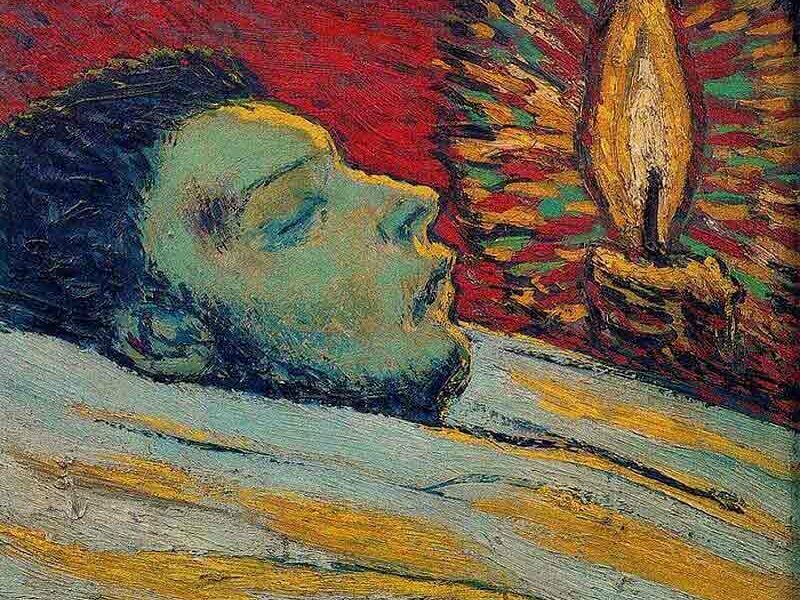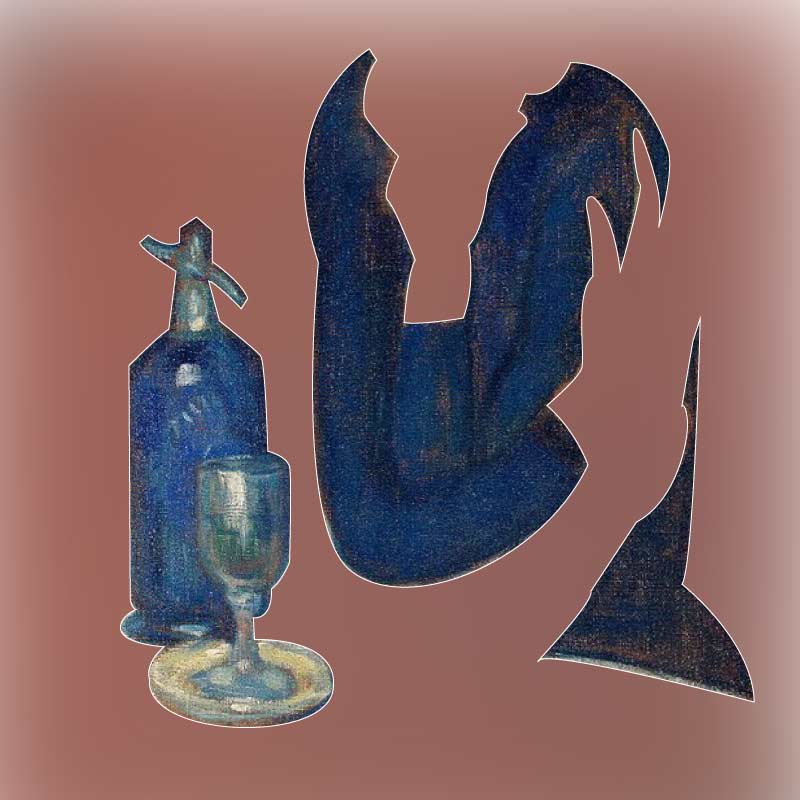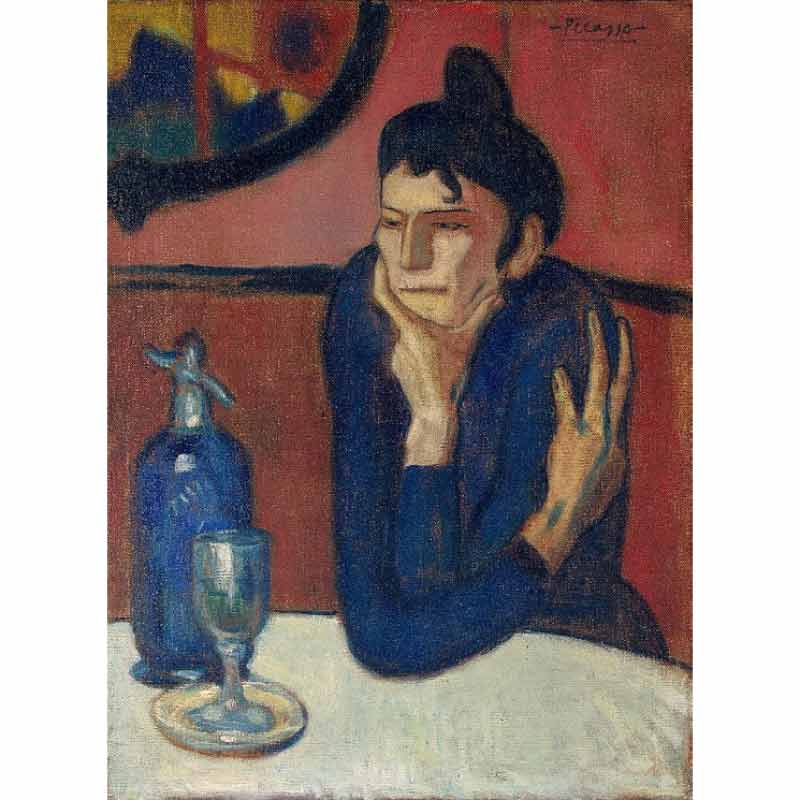Пабло Пикассо и его работы
С сегодняшнего дня начинаю публикацию всех художественных работ Пикассо, у меня есть практически все его работы начиная с 1901 по 1909 года. Публиковаться они будут частями разделенными на периоды (года) Нашел практически все его работы с оригинальными подписями.По мере публикации его работ я буду вписывать краткую информацию из его биографии, надеюсь что вам будет интересно как почитать так и посмотреть на работы. Поехали.
Пабло Руис Пикассо (исп. Pablo Ruiz Picasso, 25 октября 1881, Малага, Испания — 8 апреля 1973, Мужен, Франция), полное имя Пабло Диего Хосе Франсиско де Паула Хуан Непомусено Мария де лос Ремедиос Киприано де ла Сантисима Тринидад Мартир Патрисио Руис и Пикассо (исп. Pablo Diego José Francisco de Paula Juan Nepomuceno María de los Remedios Cipriano de la Santísima Trinidad Martyr Patricio Ruíz y Picasso) — испанский художник, скульптор, график, керамист и дизайнер.
Основоположник кубизма (совместно с Жоржем Браком), в котором трёхплоскостное тело в оригинальной манере рисовалось как ряд совмещённых воедино плоскостей. Пикассо много работал как график, скульптор, керамист, и т. д. Вызвал к жизни массу подражателей и оказал исключительное влияние на развитие изобразительного искусства в XX веке.
Первые работы
Пикассо начал рисовать с самого детства, первые уроки художественного мастерства Пикассо получил у своего отца — учителя рисования Х. Руиса, и вскоре владел им в совершенстве. В 8 лет он рисует свою первую серьезную картину маслом, Пикадора, с которой он не расставался в течение всей жизни.
Пикассо учился в школе искусств в Ла-Корунье (1894—1895). В 1895 году он поступает в школу изящных искусств в Барселоне. Сначала он подписывается своим именем по отцу Ruiz Blasco, но затем выбирает фамилию матери Picasso. В сентябре 1897 он уезжает в Мадрид, где в октябре проходит конкурс в академию Сан-Фернандо.
Пикассо возвращается в Барселону в июне 1898, там он входит в общество «Els Quatre Gats» — богемное кафе с круглыми столами на художественные темы. В этом кафе пройдет его первая выставка. В Барселоне он сблизился со своими будущими друзьями Carlos Casagemas и Jaime Sabartès.
Picasso Arlequin accoude. 1901. 82.8×61.3 cm. Oil on canva
Picasso Autoportrait ‘Yo, Picasso’. 1901. 73.5×60.5 cm. Oil
Picasso Buveur de l’absinthe. 1901. 65.8×50.8 cm. Oil on c
Picasso Couple voyant. 1901. 18 x 11.5 cm. India ink & water
Picasso Courtisane au collier de gemmes. 1901. 65.3×54.5
Picasso Femme avec une cigarette. 1901. 73×49.5 cm. Oil on
Picasso Femme dans une cape. 1901. 73×50 cm. Oil on canvas
Picasso Femme dans vert assise. 1901. 17.5×11.5 cm. India
Picasso Le suicide (Casagemas). 1901. 52×34 cm. Oil on car
Picasso Les deux saltimbanques (Arlequin et sa compagne). 19.
Picasso Picasso avec partenaire. 1901. 17.3×13 cm. Ink
Picasso Portrait de Mateu Fernandez de Soto. 1901. 45×37 cm
Picasso Portrait de Pedro Manach NG Washington detalj
Picasso Profil d’une jeune femme (fille avec fleur rouge)
Picasso Sada Yacco. 1901. 40 x 31 cm. India ink & Gouache
The Subject of the Painting
The subject in this painting is a woman sitting alone at a table in a cafe. A blue bottle of alcohol and a glass cup lies in front of her, while she is engrossed in deep thought.
Her deformed hands are wrapped around her body. She wears dark blue clothing whose colors echo in the bottle and glass on the table. In the background are red-orange walls and a window or maybe an abstract painting. The artist has signed his name with black ink in the top right corner of the frame.
Picasso was a struggling artist during the early 1900’s and therefore he didn’t have enough money for art supplies. He often reused his canvases and in the case of “The Absinthe Drinker”, he used both sides of the canvas. Behind this painting is a rough outline of the protagonist’s head, probably a version of the painting that didn’t turn out as planned.
The Blue Period
On top of decades of poverty and loneliness, Picasso was faced with several circumstances that had a profound influence on him not only as a person but also as an artist. In 1895, Picasso lost his sister, and soon afterward in 1901, he lost his close friend Carlos Casegemas.
These events are often linked to Picasso’s “Blue Period” art which spanned from 1901 to 1904.
These paintings have certain characteristics in common that are unusual enough to warrant their own category. The predominant color scheme is blue, which is the most noticeable aspect. These paintings have a somber and gloomy emotional tone with themes of old age, poverty, starvation, illness, and even maternity. Picasso’s creative evolution was greatly influenced by his Blue Period.
 The Death of Casagemas (1901) by Pablo Ruiz Picasso. Public Domain
The Death of Casagemas (1901) by Pablo Ruiz Picasso. Public Domain
“The Death of Casagemas” is the title of his first painting from the blue era. The lifeless body of Casagemas is depicted in this picture next to a flame. Blue is used sparingly, primarily on the icy face of his deceased friend. As time went on, this blue covered the entire canvas.
“The Absinthe Drinker” was painted at the very beginning of the Blue Period, and hence we see some warm colors along with blue in Picasso’s palette.
Analysis and Meaning
Picasso’s “The Absinthe Drinker” seems to draw heavily from the themes of important French paintings by Edgar Degas and Toulouse-Lautrec. The painting may be understood through its colors and its overall theme.
Colors
 Major Colors: The Absinthe Drinker (1901) by Pablo Picasso. Public Domain
Major Colors: The Absinthe Drinker (1901) by Pablo Picasso. Public Domain
Since this painting was created at the very beginning of the Blue Period, we may see both warm and cool colors on the canvas in contrast to the predominantly blue palette of the late blue period paintings. While most of the painting is covered with shades of red and yellow, the blue brings in a mood of dejection and loneliness. The red here may be a symbol of fire and warmth, while the blue reflects discomfort and depression.
While the subject has certain three-dimensional features, the background is extremely flat and lacks shading. In this illustration, thickly painted colors cover distinct fields of the canvas distinguished from one another by black outlines. This flatness creates a sense of discomfort that tends to generate pressure around the absinthe drinker, forcing her to curl inward.
The contrast between the colors is obviously not the result of a mindless choice by the artist. While the walls surrounding the woman emanate warmth and calmness, the different shades of blue ooze tension, pain, and melancholy. The blue bottle represents her choice to take in something that is “blue” and negative, by being engrossed in her thoughts rather than to find calmness in the warmth around her.
Meaning
 The Absinthe Drinker (1901) by Pablo Picasso. Public Domain
The Absinthe Drinker (1901) by Pablo Picasso. Public Domain
The first thing one may notice in the painting is its out-of-proportion and unrealistic elements. The subject rests her elbows on a table while one arm is wrapped around her body and the other arm supports her chin. She appears to be in deep thought almost mindless of her posture. The subject’s left hand instantly grabs the eye as it is not only deformed but also very large.
By wrapping the arms around her body she encloses herself in an embrace almost as if trying to pacify or protect herself. Her face has flat, pronounced features that go well with the distorted hand. These distortions combine to give rise to a general feeling of unease in the scene.
The tightness of this embrace exudes a sense of immense tension and unease. Her face along with her posture makes it look as if she’s holding her breath, thus giving rise to a sense of suffocation. The embrace not only highlights her loneliness, but also the feeling of abandonment.
The self-absorbed woman sits alone at the table, her expression reveal internal melancholy and discomfort. Her mental dissociation seems to percolate from her mind to that of the audience, hence we too see a distorted image of her.
The absinthe drinker may just be a simple replication of what Picasso saw at a cafe, however, his expressive strokes help to create a timeless picture of struggle, loneliness, and melancholy. A thick black line runs behind her around the wall, dividing her head and torso. This subliminally shows us that even though the woman’s body is here, her mind is elsewhere.




























